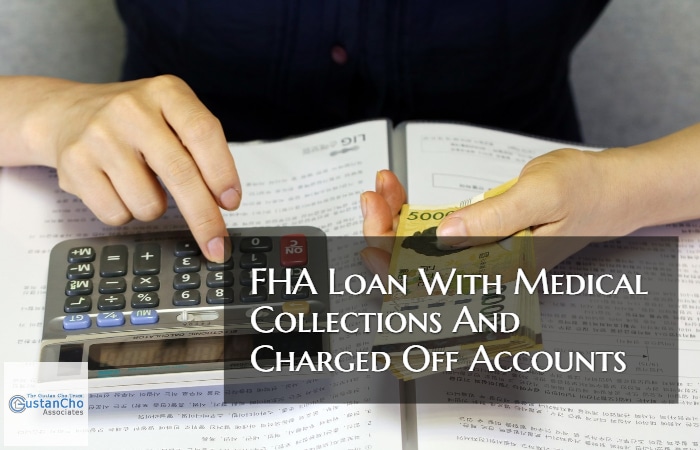Closing Disclosure
One critical document in buying or selling a home is the Closing Disclosure (CD). The CD is a vital piece of paperwork that outlines the specifics of your mortgage arrangement, providing transparency and clarity to ensure a smooth closing process. In this comprehensive guide, we’ll delve into the intricacies of the Closing Disclosure, exploring its significance, contents, and essential role in real estate transactions.
Learn more about Closing Disclosure with us.
Understanding the Closing Disclosure:
The Closing Disclosure, mandated by the Consumer Financial Protection Bureau (CFPB), is a standardized form designed to provide borrowers with clear and concise information about their loan terms and closing costs. It replaced the HUD-1 Settlement Statement and the final Truth in Lending Act (TILA) disclosure form in 2015, streamlining the process and enhancing consumer transparency.
Essentially, the CD is a five-page document that borrowers receive at least three business days before the closing date. Its primary purpose is to enable borrowers to review and compare the final loan terms and closing costs with the Loan Estimate (LE) they received at the beginning of the mortgage application process. By comparing these documents, borrowers can ensure that there are no surprises at the closing table and that they fully understand the financial implications of their mortgage loan.
Key Components of the Closing Disclosure:
Loan Terms
The CD provides a detailed overview of the loan terms, including the loan amount, interest rate, monthly principal and interest payments, and any prepayment penalties or balloon payments.
Projected Payments
This section delineates the borrower’s monthly payments throughout the duration of the loan, encompassing principal, interest charges, insurance for the mortgage, and estimated escrow disbursements for taxes and insurance.
Closing Costs
The CD itemizes all closing closing expenses linked to the loan, like fees from the lender, appraisal fees, title insurance, and escrow fees. It also includes a comparison table highlighting any initial LE changes.
Cash to Close
This section summarizes the total funds required from the borrower for the closing transaction, including closing costs, prepaid expenses, and the down payment.
Loan Calculations
The CD includes a breakdown of the loan calculations, including the total amount financed, the yearly interest rate and the total finance cost.
Other Disclosures
In addition to the loan details, the CD also includes other important disclosures, such as information about the borrower’s liability in the event of default, the escrow account, and any special provisions or conditions of the loan.
Get prequalified in just five minutes. Click here!
Purpose Of Closing Disclosure
There never seems an end to new mortgage regulations . The intention and purpose of the creation of the Closing Disclosure was to give home buyers a full 3 days to look over final mortgage loan documents with all the costs and fees disclosed and the bottom line given to them for review.
The creation of the Closing Disclosure and the mandatory 3 day waiting period means no more last minute closings and if there are changes after the mortgage loan borrower receives the Closing Disclosure, a new Closing Disclosure needs to be disclosed and there will be an additional 3 day mandatory waiting period which means more delays in the mortgage loan closing.
Since the penalties for violations are so severe, the bigger the mortgage lender, the more conservative approach they are taking. It also means the more inept they are at handling the volume, since their own expectations become improbable to maintain and be met.
Mandatory Waiting Period With Closing Disclosure
Some mortgage lenders are using the longest time period possible 7-12 days from final clearing to close to the actual closing date. Since there is a 3 day delivery period for mail if you don’t email it (you need to have a read receipt that you have received your documents) and a 3 day waiting period. Mortgage lenders are assuming the borrowers did not get those statements emailed to them.
Here a scenario: imagine your lease expired and you move out the 31st of a month. You receive your final closing disclosure for your new house the 30th, you would have to wait till the 6th-10th of the following month to move in(depending on lender). You might have to stay in a hotel until then.
Here is another example with the same outcome: you are trying to sell your home in order to buy a new one. You need the proceeds from your current sale to put as a down payment on your new home. That home seller is also using their proceeds to buy another home. How will you be able to coordinate those transactions?
Importance of Reviewing the Closing Disclosure
Examining the Closing Disclosure is an essential phase in the home purchasing journey, as it allows borrowers to ensure that their loan terms align with their expectations and financial capabilities. By carefully examining the CD, borrowers can:
- Verify that the loan terms and closing costs match the initial Loan Estimate provided by the lender.
- Identify discrepancies or unexpected fees and address them with the lender before closing.
- Understand the long-term financial implications of the mortgage loan, including monthly payments, interest rates, and closing costs.
- Prepare financially for the closing by ensuring they have the necessary funds to cover the closing costs and cash-to-close amount.
Review the Closing Disclosure thoroughly to avoid misunderstandings, delays, or financial setbacks during the closing process. Therefore, borrowers need to take the time to carefully review the document and seek clarification from their lender or real estate agent if they have any questions or concerns.
Tips for Reviewing the Closing Disclosure:
- Compare with the Loan Estimate: The CD should be compared with the initial Loan Estimate to identify any discrepancies or changes in the loan terms and closing costs.
- Pay Attention to Details: Review each section of the CD carefully, paying close attention to the loan terms, closing costs, and cash-to-close amount.
- Seek Clarification: If any aspects of the Closing Disclosure are unclear or confusing, feel free to ask clarification from your lender or real estate agent without delay.
- Plan: Review the Closing Disclosure well before the closing date to allow ample time to address any issues or concerns that may arise.
- Be Prepared to Negotiate: If you discover any discrepancies or unexpected fees on the Closing Disclosure, be prepared to negotiate with the lender to ensure that the terms are fair and accurate
Closing Disclosure Causing Delays And More Harm To Consumers
I have seen ten different scenarios on what fees can change and cannot in order to be disclosed without delay or penalty. The lack of consistency makes knowing who is doing it right seem difficult. Every mortgage lender has their own legal staff, and many do not see it the same way. In the end the fees for compliance have all gone up. Appraisal fees are higher, closings costs are higher, credit reports, and in the end rates will increase to cover interest rate lock expirations.
Refinancing with an interest rate lock expiration is its own issue, since they already have a 3 day free look to rescind. This now means they will have up to 9 days from final conditions to funding date, which make doing a 30 day lock an unlikely scenario, hence a higher rate for them. To finish on a high note, the forms are easier to read and comprehend, and the professionalism has stepped up in the industry across the board.
Frequently Asked Questions (FAQs)
- Q: What is a Closing Disclosure (CD)?
A: The Closing Disclosure (CD) is a document provided to borrowers before closing, outlining the final details of their mortgage loan terms and closing costs. - Q: When do borrowers receive the Closing Disclosure?
A: Borrowers generally receive the Closing Disclosure a minimum of three business days prior to the scheduled closing date. - Q: What information does the Closing Disclosure include?
A: The Closing Disclosure includes details such as loan terms, projected payments, closing costs, cash to close, loan calculations, and other disclosures. - Q: How does the Closing Disclosure differ from the Loan Estimate?
A: At the onset of the mortgage application process, the Loan Estimate offers an approximation of loan terms and closing costs, whereas the Closing Disclosure furnishes the conclusive details just before the closing. - Q: Why is it important to review the Closing Disclosure?
A: Reviewing the Closing Disclosure is crucial to ensure that the loan terms and closing costs are accurate and align with expectations, helping borrowers avoid surprises at the closing table. - Q: Can borrowers make changes to the Closing Disclosure?
A: Borrowers can request changes to the Closing Disclosure if they identify errors or discrepancies, but any changes may delay the closing process. - Q: Who provides the Closing Disclosure?
A: The Closing Disclosure is typically provided by the lender, although in some cases, it may be prepared by the settlement agent or closing attorney. - Q: What happens if there are changes to the Closing Disclosure?
A: If there are changes to the Closing Disclosure, borrowers must receive a revised version and have an additional three business days to review before closing.
The Closing Disclosure serves as the final checkpoint in the real estate closing process, offering borrowers a thorough summary of their loan conditions and closing expenses. By carefully reviewing the CD and comparing it with the initial Loan Estimate, borrowers can guarantee their thorough comprehension of the financial ramifications of their mortgage loan and avoid any surprises at the closing table. Reviewing the Closing Disclosure thoroughly is essential for a smooth and successful closing process, allowing buyers and sellers to proceed confidently and clearly.
Start your mortgage journey with us. You can contact us at Gustan Cho Associates by calling us (800) 900-8569 or text us for a faster response. You can also email us at alex@gustancho.com. Our expert Loan Officers are available even during weekends and holidays!








